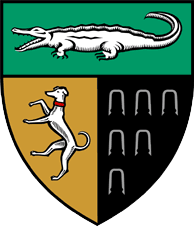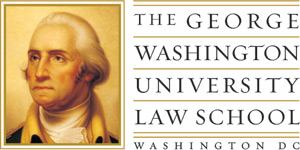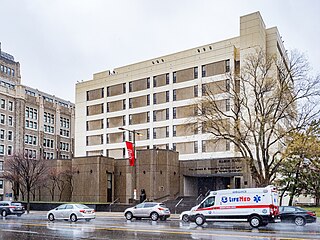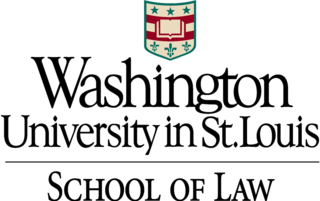
Rutgers University, officially Rutgers, The State University of New Jersey, is a public land-grant research university consisting of four campuses in New Jersey. Chartered in 1766, Rutgers was originally called Queen's College, and was affiliated with the Dutch Reformed Church. It is the eighth-oldest college in the United States, the second-oldest in New Jersey after Princeton University, and one of nine U.S. colonial colleges that were chartered before the American Revolution.

Yale Law School (YLS) is the law school of Yale University, a private research university in New Haven, Connecticut. It was established in 1824. The 2020–21 acceptance rate was 4%, the lowest of any law school in the United States. Its yield rate of 87% is also consistently the highest of any law school in the United States.

The J. Reuben Clark Law School is the law school of Brigham Young University (BYU) in Provo, Utah. Founded in 1973, the school is named after J. Reuben Clark, a former U.S. Ambassador, Undersecretary of State, and general authority of the institution's sponsoring organization, The Church of Jesus Christ of Latter-day Saints.
The Boston University School of Law is the law school of Boston University, a private research university in Boston. Established in 1872, it is the third-oldest law school in New England, after Harvard Law School and Yale Law School. Approximately 630 students are enrolled in the full-time J.D. degree program and about 350 in the school's five LLM degree programs. BU Law was one of the first law schools in the country to admit students to study law regardless of race or gender.

Quinnipiac University School of Law is the law school of Quinnipiac University located in North Haven, Connecticut. Quinnipiac Law is the newest law school in Connecticut, having received full accreditation from the American Bar Association (ABA) in 1992. It is a member of the Association of American Law Schools, and is currently ranked tied at 143rd by U.S. News & World Report.

The George Washington University Law School is the law school of George Washington University, in Washington, D.C. Established in 1865, GW Law is the oldest law school in the national capital. GW Law has 275 elective courses in business and finance law, environmental law, government procurement law, intellectual property law, international comparative law, litigation and dispute resolution, and national security and U.S. foreign relations law.

The Temple University James E. Beasley School of Law is the law school of Temple University, a public research university in Philadelphia, Pennsylvania. It was founded in 1895 and enrolls about 650 students.

The American University Washington College of Law is the law school of American University, a private research university in Washington, D.C. It is located on the western side of Tenley Circle in the Tenleytown section of northwest Washington, D.C. The school is accredited by the American Bar Association and a member of the AALS.

Rutgers University–Newark is one of three regional campuses of Rutgers University, a public land-grant research university consisting of four campuses in New Jersey. It is located in Newark. Rutgers, founded in 1766 in New Brunswick, is the eighth oldest college in the United States and a member of the Association of American Universities. In 1945, the state legislature voted to make Rutgers University, then a private liberal arts college, into the state university and the following year merged the school with the former University of Newark (1936–1946), which became the Rutgers–Newark campus. Rutgers also incorporated the College of South Jersey and South Jersey Law School, in Camden, as a constituent campus of the university and renamed it Rutgers–Camden in 1950.

Rutgers University–Camden is one of three regional campuses of Rutgers University, a public land-grant research university consisting of four campuses in New Jersey. It is located in Camden, New Jersey. Founded in 1926 as the South Jersey Law School, Rutgers–Camden began as an amalgam of the South Jersey Law School and the College of South Jersey. It is the southernmost of the three regional campuses of Rutgers—the others being located in New Brunswick and Newark. It is classified among "R2: Doctoral Universities – High research activity".

Villanova University's Charles Widger School of Law (CWSL) is the law school of Villanova University, a private Roman Catholic research university in Villanova, Pennsylvania. It was opened in 1953 and is approved by the American Bar Association (ABA) and a member of the Association of American Law Schools (AALS). Approximately 720 students study full-time in the J.D. program which offers more than 100 offerings including foundation courses, specialty offerings, drafting courses, clinical experiences, seminars, simulation courses and externships.
The University of CalgaryFaculty of Law, at the University of Calgary. is a law school in Calgary, Alberta.
Seton Hall University School of Law is the law school of Seton Hall University, and is located in downtown Newark, New Jersey. Seton Hall Law is the only private law school in New Jersey. The school confers three law degrees: Juris Doctor, Master of Laws, and Master of General Legal Studies. Founded in 1951, it is accredited by the American Bar Association (ABA), and is also a member of the Association of American Law Schools (AALS).

The Washington University School of Law (WashULaw) is the law school of Washington University in St. Louis, a private research university in St. Louis, Missouri. Founded in 1867, the law school was originally located in downtown St. Louis, and relocated in 1904 to the Danforth Campus of Washington University in St. Louis.
The Valparaiso University Law School was the law school of Valparaiso University, a private university in Valparaiso, Indiana. Founded in 1879, the school was accredited by the American Bar Association in 1929 and admitted to the Association of American Law Schools in 1930. In October 2016, the ABA censured the school for admitting applicants who did not appear capable of satisfactorily completing the school's program of legal education and being admitted to the bar. One year later, the school suspended admissions and shut down after the last class graduated in 2020.

Fordham University School of Law is the law school of Fordham University. The school is located in Manhattan in New York City, and is one of eight ABA-approved law schools in that city. In 2013, 91% of the law school's first-time test takers passed the bar exam, placing the law schools' graduates as fifth-best at passing the New York bar exam among New York's 15 law schools.
Widener University Delaware Law School is a private law school in Wilmington, Delaware. It is one of two separate ABA-accredited law schools of Widener University. Widener University Law School was founded in 1971 as the Delaware Law School and became affiliated with Widener in 1975. In 1989, it was known as Widener University School of Law when it was combined with the campus in Harrisburg, Pennsylvania. In 2015, the two campuses separated, with the Harrisburg one renamed to Widener University Commonwealth Law School.
Regent University School of Law is the law school of Regent University, a private Christian university in Virginia Beach, Virginia. It was founded in 1986 and accredited by the American Bar Association in 1996.

Wake Forest University School of Law is the law school of Wake Forest University, a private research university in Winston-Salem, North Carolina. Established in 1894, Wake Forest University School of Law is an American Bar Association (ABA) accredited law school and is a member of the Association of American Law Schools (AALS). The current dean is Andrew R. Klein.
Widener University Commonwealth Law School is a law school located in Harrisburg, Pennsylvania, and part of Widener University, a private university in Chester, Pennsylvania. It is one of two separate ABA-accredited law schools of the university. It was founded in 1989 as an expansion of Widener University's law school in Wilmington. It awards the Juris Doctor degree in its full-time and part-time programs and is a member of the Association of American Law Schools (AALS).

























